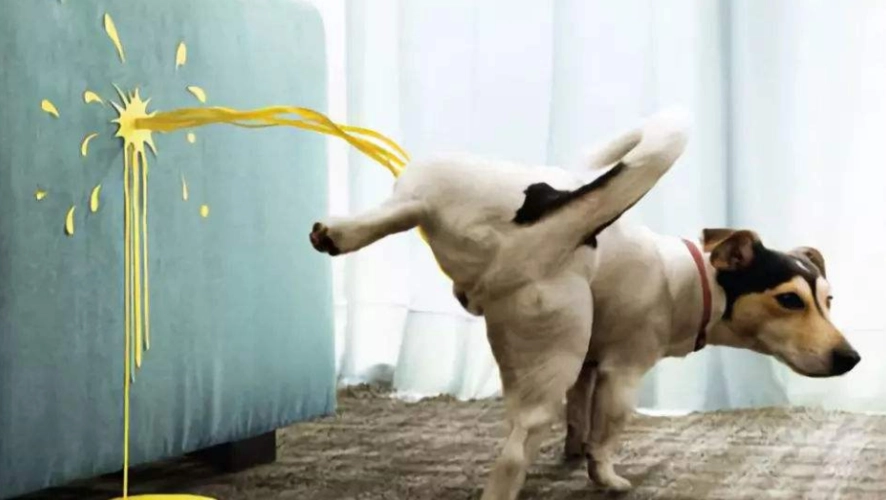Training your dog to urinate and defecate in appropriate places is one of the most crucial aspects of pet ownership. Proper training not only ensures a clean home but also contributes to your dog’s overall well-being. In this comprehensive guide, we will explore effective methods for potty training your dog, providing you with tips and techniques to make the process smoother for both you and your furry friend.

1. Understanding Your Dog’s Bathroom Needs
Recognizing Signs of Urination and Defecation
Understanding your dog’s natural bathroom habits is essential for successful training. Dogs typically need to relieve themselves after waking up, eating, or drinking, and after play sessions.
Common Signs to Watch For
- Sniffing around the house
- Circling or pacing
- Whining or barking
- Going to the door
By recognizing these signs, you can anticipate your dog’s needs and take them outside in time.
2. Establishing a Regular Routine
Importance of a Consistent Schedule
Dogs thrive on routine. Establishing a consistent bathroom schedule helps your dog learn when and where they should go.
Suggested Schedule
- Puppies: Every 1-2 hours, as well as after meals and naps.
- Adult Dogs: Every 4-6 hours, depending on their needs.
Stick to the same times each day for feeding and bathroom breaks to reinforce the habit.
3. Choosing the Right Bathroom Spot
Selecting an Outdoor Bathroom Area
Designate a specific outdoor area for your dog to relieve themselves. Consistently bringing them to the same spot helps them associate that area with bathroom needs.
Factors to Consider
- Quiet Location: Choose a place with minimal distractions.
- Accessibility: Ensure the spot is easily accessible for quick bathroom trips.
4. Using Positive Reinforcement
The Power of Rewards
Positive reinforcement is one of the most effective training methods. Reward your dog immediately after they urinate or defecate in the right place.
Types of Rewards
- Treats: Use small, tasty treats that your dog enjoys.
- Verbal Praise: Use a happy tone to praise them.
- Playtime: Engage in a quick play session after a successful bathroom break.
5. Accidents Happen: Handling Mistakes
Staying Calm and Collected
Accidents are a natural part of the training process. If your dog has an accident indoors, avoid scolding them, as this can create fear and confusion.
Steps to Take
- Clean Up Immediately: Use an enzyme cleaner to eliminate odors.
- Redirect to Outside: Take your dog outside to reinforce the right behavior.
6. Using Crate Training as a Tool
Benefits of Crate Training
Crate training can be an effective method for potty training, as dogs naturally avoid soiling their sleeping area.
Tips for Successful Crate Training
- Size Matters: Ensure the crate is just big enough for your dog to stand up, turn around, and lie down.
- Gradual Introduction: Introduce the crate slowly, using treats and praise to create a positive association.
7. Recognizing Health Issues
When to Be Concerned
Sometimes, issues with urination and defecation can be signs of health problems. If your dog frequently has accidents or shows changes in bathroom habits, consult your veterinarian.
Common Health Concerns
- Urinary tract infections
- Gastrointestinal issues
- Behavioral problems
Addressing these concerns promptly can help prevent further complications.
8. Gradually Increasing Freedom
Allowing Independence
As your dog becomes more reliable with their bathroom habits, you can gradually increase their freedom within the house.
Monitoring Progress
Keep an eye on their behavior. If accidents occur, you may need to revert to a more structured routine temporarily.
9. Training Older Dogs
Potty Training Adult Dogs
Training an adult dog can be slightly different, especially if they have established habits. Patience and consistency are key.
Steps for Success
- Establish a New Routine: Use the same techniques you would for a puppy, but be prepared for a longer adjustment period.
- Identify Triggers: Pay attention to any triggers that may cause anxiety or distraction.
10. The Importance of Patience and Persistence
Staying Committed to the Process
Potty training can take time, and every dog learns at their own pace. Stay committed to the process and be patient.
Celebrating Milestones
Celebrate small victories along the way. Recognizing progress can help keep you motivated and encourage your dog to succeed.
Conclusion
Training your dog to urinate and defecate in appropriate places is a vital aspect of pet ownership. By understanding your dog’s needs, establishing a consistent routine, and using positive reinforcement, you can effectively teach your dog where to go. Remember to be patient, handle accidents calmly, and consult your veterinarian if any health issues arise. With dedication and consistency, you’ll enjoy a clean home and a happy, well-trained dog.

Comments (0)